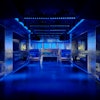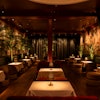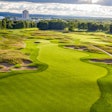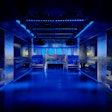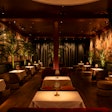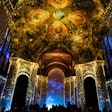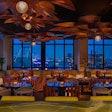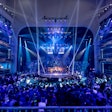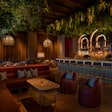
On February 5, Red Bull will introduce Snowscrapers, a snowboarding competition and nine-story ski jump to Manhattan’s Lower East Side. The massive undertaking requires a month’s worth of construction and snow blowing, and once the $100,000 in prize money is handed out, the company would like to see the jump reconfigured into a short-term ski hill for city kids—though nothing has been finalized.
Former professional skier Jeff Regis, now head of northeast sports marketing at Red Bull, helped conceptualize the event and pull off its tricky execution. He spoke with us earlier this week about all that’s gone into the production, the vendors they couldn’t have done it without, and making sports marketing more authentic.
How did the Idea for Snowscrapers come about?
The idea came about from myself and our event partner, Jack Fleming at Aura360—they’re producing the event. He and I have worked together on events for 10 years, from cold-water surf events in the Atlantic to a BMX event that we did last year in Central Park. Coming from the snow sports world, seeing what we were able to do in Central Park based on the technology of ramp structure, and then having our relationship with New York City parks, we thought we always wanted to bring something this big to New York City, and now we have the tools to do it.
The Snowscrapers ramp is nine stories tall. What kind of technology does that require?
This technology is called stack box. It uses stackable containers and a reconfigurable truss system. It came out towards the end of 2007, and we integrated it into the quarter-pipe biking event we did in Central park this past June with [BMX biker] Kevin Robinson. Now we’re using it for this structure. Parks have also used it to construct sledding hills.
What are some of the challenges of attempting something like this in an urban area versus a more natural landscape?
Number one is the weather. That’s been a major concern. All of us have been on the Weather Channel and different Web sites nonstop. We were fortunate enough to bring in two snowmaking guns from Jack Frost Big Boulder, a resort in Lake Harmony, Pennsylvania. We were able to bring those guns that are used in the rural setting into the city, and we’re blowing a lot of snow right now. We started last Thursday. We’ve got cannons hooked up to the fire hydrants, booster pumps, and all of these special systems in place to combat bad weather. We’ve done everything we can to make sure we’re getting around that. If we didn’t partner with Jack Frost, we wouldn’t be feeling as good as we do right now. And we’d have to rely on crushed ice, which comes from ski resorts in big trucks. We’d also have to blow all of the snow with liquid nitrogen, which would raise the roof of the budget enormously.
How do you find talent and judges for an event like this?
The talent and the judges are all a part of Ticket to Ride. Snowscrapers is a T.T.R.-sanctioned event. They represent the best snowboarding events in the world, and there are criteria you have to meet to get sanctioned, but then they provide their judging system. The guys that work there are all good friends. We’ve worked together off and on over the years.
What kind of broadcast partners do you have lined up for the competition?
It will be a live broadcast on MSG [Madison Square Garden TV]. The early preliminaries will be on from 6 p.m. to 7 p.m. and then we will be sharing the airspace with the Islanders’ hockey game, with a live remote at points during the game. The finals will air completely from 10 p.m. to 11 p.m. The whole event will also have a live Webcast on the official site. [A delayed broadcast will also air February 15 on NBC.]
How did you originally get involved with sports marketing at Red Bull?
A lot of these sports needed a push, and they needed a push in the right way—a tasteful way that has the voice of the sport and the voice of the athletes behind what they did. I think that before Red Bull became involved, a lot of it was kind of exploitative. The efforts made by the companies almost came off cheesy. It wasn’t always what athletes wanted, and that’s what drove me to Red Bull.
You say a lot of sports marketing can seem exploitative. How does Red Bull try to bring authenticity to its projects?
A lot of our staff, including myself—we’re all athletes. We’re all still participating and active in sports, and a lot of these projects come from the minds of our athletes. This one, for instance, was an idea that [snowboarders] Shaun White, Travis Rice, and Pat Moore came up with in a brainstorm. It’s always been a dream of our Red Bull snowboarding team to bring a big backcountry jump to the most urban setting—not just for the photos or the excitement of it but to help grow the sport. You know, it’s been in the backwoods for so long. That’s all good and pure, but to help the sport, you need to bring events like this to New York City and other major metropolitan markets around the world.
Correction: The introduction has been altered to more accurately reflect future plans for the ski jump.


